
Brian
gamer level 2
385 xp
385 xp
followers
11
11
Use my invite URL to register (this will give me kudos)
https://boardgaming.com/register/?invited_by=mistersnrub
profile badges
...
...
...
...
recent achievements

Amateur Reviewer
Review 3 games and receive a total of 40 positive review ratings.
Review 3 games and receive a total of 40 positive review ratings.

Noble
Gain 2 followers
Gain 2 followers

Rated 10 Games
Rate 10 games you have played.
Rate 10 games you have played.

Gamer - Level 2
Earn Gamer XP to level up!
Earn Gamer XP to level up!




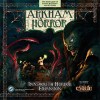


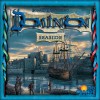





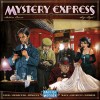







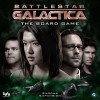


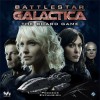




7 Wonders
Seven Wonders is everything you want out of a board game. It’s relatively easy to learn, contains colorful, high quality art design, and relies mostly on strategy rather than luck. If you play this game once you’ll be likely to play 2, 3, 4, or more times that night.
Concept
The concept of 7 Wonders is historical, but I find it more exciting than most other historical board games. You are the ruler of an ancient civilization, one of 7 that built the 7 Wonders of the ancient world. If you’ve ever played Civilization or any game which contains a technology tree, this will feel right at home. If not, don’t be scared; it’s very simple to learn.
Gameplay
The game is split up into three ages. At the end of the three ages you calculate all the victory points you have acquired and the player with the most wins. At the start of the game each person chooses a different civilization board and 7 cards are dealt out to each player for the start of age 1. Each player looks at these 7 cards and chooses one to play on their board. These cards are all vividly colored and represent goods, structures, and military powers. You can only play cards that you can afford (for example, if a card costs 1 wood as shown on the top left, you will need to have one wood in front of you already). After playing a card everyone passes their cards to the next person so you will get a new hand of 6 cards for your second play. Once you run out of cards the age ends, military victories are counted, and the next age begins.
An interactive aspect of this game is the trading and military. A player needs to be concerned about the people to their left and right at all times. Adjacent players are people you will be interacting with to buy resources from, sell resources to, and battle against with your military. This adds a unique gameplay element which encourages you to work with or against the people around you.
Presentation
One of the biggest draws to this game for me was its high quality art design. 7 Wonders is very elegant, it does everything right in terms of presentation. There aren’t too many cards or pieces, the boards are sturdy, the art work is simple and vivid, and the card text doesn’t detract from the overall game. A lot of love was put into this game and it shows. When you’re finished with a game you will just be in awe of how cool it looks laid out on the table.
Overall
I really can’t say much negative about this game. 7 Wonders impresses me on every level. It’s easy to teach to newbies, very elegantly presented, and provides an interactive and strategic civilization building experience. It may not be the deepest deck building game on the market, but it’s so well polished that it deserves to be part of your regular game rotation.